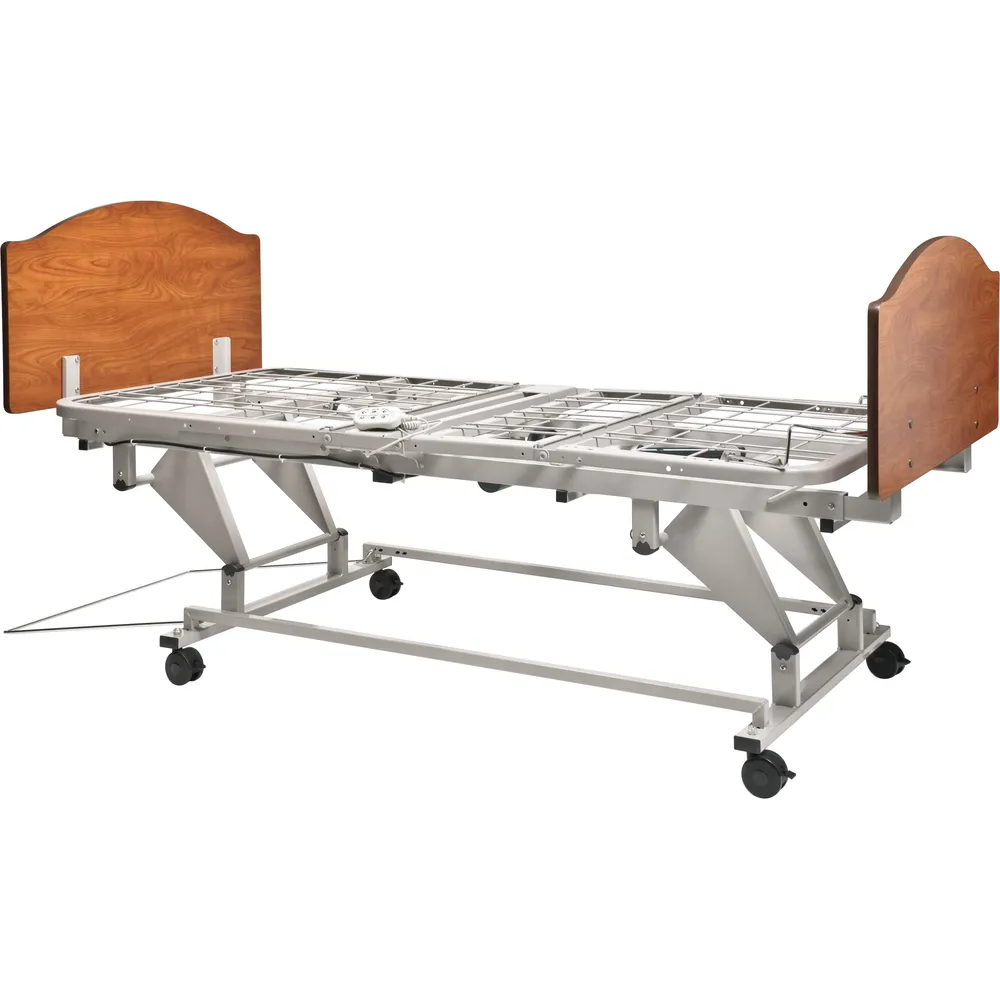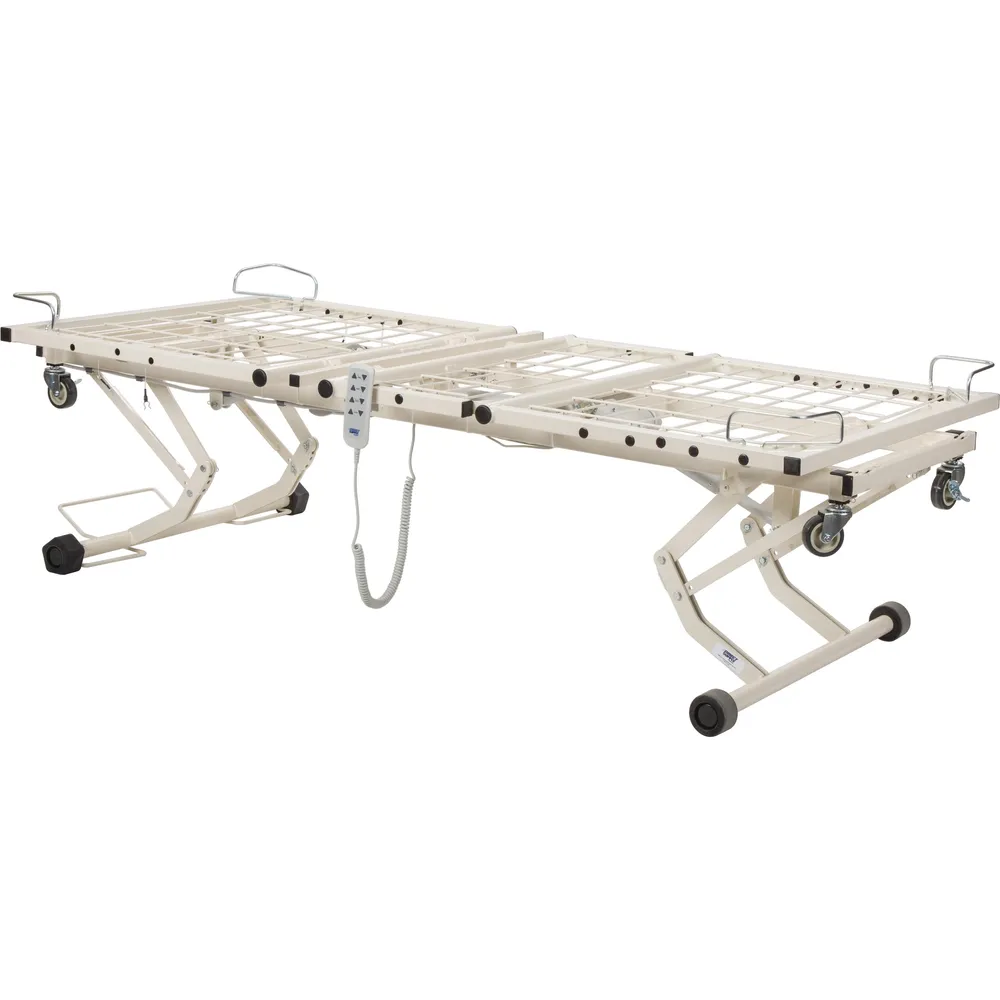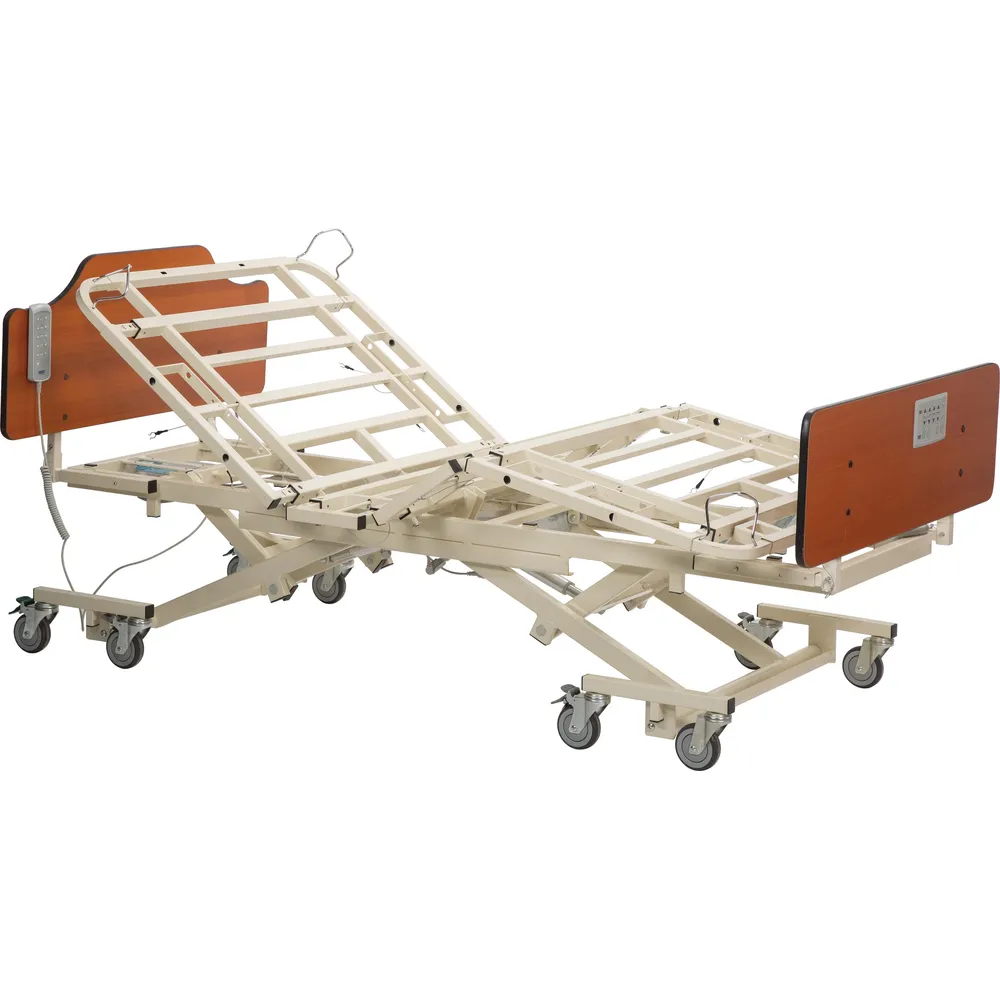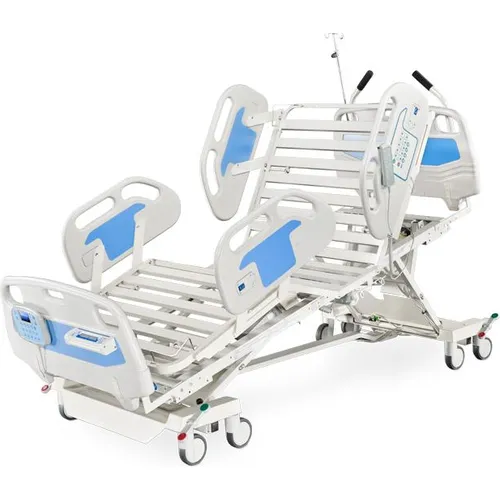Standard Adjustable-Height Beds
- Adjustable travel heights; typically don’t go lower than 9″
- Most adjustable-height beds offer standard functions, including articulating head and knee sections for resident comfort


Adjustable-Height Low Beds
- Adjustable-Height Low Beds have the best combination of features for Senior Living
- Same functions as Standard Adjustable-Height beds, but can be set to a low height of 10″ or less to help protect fall-risk residents
- Can go higher; a bed at 30″ combined with a 6″ mattress provides a safer working height for caregivers
- Some models offer five functions, including Trendelenburg and Reverse Trendelenburg
Bariatric Beds
- Bariatric hospital beds are specifically designed for larger residents
- Wider and often longer than other beds to accommodate weight capacities up to 1000 lbs.


Acute Care Beds
Acute Care Beds include more advanced features than many beds, including:
- Built-in fall management systems
- In-bed scales
- Siderails with built-in controls
- Angle indicator for head elevation
- Advanced positioning options such as Trendelenburg and Reverse Trendelenburg
Home Care Beds
- Can help reduce the risk of pressure ulcer development or other health problems associated with prolonged bed use
- A cost-effective solution for residential communities

Key Considerations for Medical Beds
Bed Width & Length
- Standard senior living beds are typically 35″ or 36″ wide, narrower than the standard twin bed (39″ wide), providing less space than residents are used to.
-
A wider bed (39″ or 42″) offers more room for sleeping and repositioning, reducing fall risks and enhancing comfort.
-
Extra-wide beds may have:
- A fixed width
- Built-in adjustments for multiple width options
- Add on kits to expand the bed width
-
Extra-wide beds may have:

Comments
0 comments
Please sign in to leave a comment.